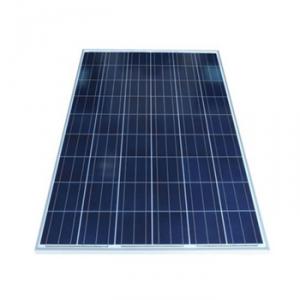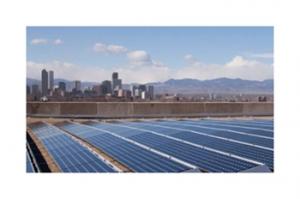Solar Inverter Victron Compatible Poly-Crystalline 240W 156*156 Solar Modules
- Loading Port:
- China Main Port
- Payment Terms:
- TT or LC
- Min Order Qty:
- -
- Supply Capability:
- -
OKorder Service Pledge
OKorder Financial Service
You Might Also Like
Solar Module Descriptions:
Solar Power Modules (known as Photovoltaics - PV) can generate electricity for your home or business, either as part of a stand-alone solar power system, or for buildings already connected to the local electricity network.
PV systems use the most abundant energy source on the planet, solar radiation, to generate electricity. They are silent, consume no fuel and generate no pollution. They also contribute to the reduction of greenhouse gas emissions; a 2kW PV system on a house will prevent the emission of about 40 tonnes of CO2 during its projected 30 year lifetime. Furthermore, the use of PV will reduce your electricity bills and exposure to fluctuating and steadily rising electricity prices.


Electrical Characteristics
Max-power (W) | 240 |
Max-Power Voltage (V) | 30.10 |
Max-Power Current (A) | 7.97 |
Open-Circuit Voltage (V) | 37.30 |
Short-Circuit Current (A) | 8.49 |
Mechanical Characteristics
Cable type, Diameter and Length | 4mm2, TUV certified, 1000mm |
Type of Connector | Compatible with MC4 plug |
Arrangement of cells | 6*10 |
Cell Size | 156*156 |
Dimension | 1580*1069*45 |
Weight | 19.5Kg |
Glass, Type and Thickness | High Transmission, Low Iron, Tempered Glass 3.2mm |
Features
Guaranteed positive tolerance 0/+5w ensures power output reliability
Strong aluminum frames module can bear snow loads up to 5400Pa and wind loads up to 2400Pa.
Excellent performance under low light environments (mornings evenings and cloudy days)
12 years for product defects in materials and workmanship and 25 years for 80% of warranted minimum power.
Certifications and standards: IEC 61215.
Manufactured according to International Quality and Environment Management System (ISO9001, ISO14100).
FAQ
Q: When do I need a charge controller and why?
The safest way to figure out if you need a charge controller is to take Battery Amp Hour Capacity and divide this by the Solar Panel max. power amp rating. If the quotient is above 200, you don't need a controller. If the number is less than 200 than you need a controller.
For example if you have a 100 amp hour battery and a 10 watt panel, you take 100 and divide it by .6 (600mA) and you get 166.6. Since this is less than 200 you need a charge controller. If you have a five-watt panel in the above example you take 100 divided by .3 (300mA) and you come up with 333.3. Since this is larger than 200 you do not need a charge controller. However you still need a blocking diode, to prevent the battery from discharging to the panel at night. So as a general rule of thumb you don't need a charge controller unless you have more than five watts of solar for every 100-amp hours of battery capacity.
Q: What is PV & how does it work?
PV stands for photovoltaic. Photo = Light and Voltaic = Electricity. A solar cell converts light to electricity.
A solar cell is made of silicon. Computer chips are made of this same material. Basically, when light strikes the surface of a solar cell some of it is absorbed into the silicon. This light energy bumps the electrons loose and causes energy to flow.
By packaging approximately 36 solar cells together a solar panel or a solar module is created. When you have more then one solar panels you create a solar array.
- Q: How does a solar inverter handle grid faults or disturbances?
- A solar inverter handles grid faults or disturbances by constantly monitoring the grid voltage and frequency. When a fault or disturbance is detected, the solar inverter will disconnect from the grid within a few milliseconds to ensure the safety and stability of the system. It will then enter a standby mode until the grid fault is resolved. Once the grid is back to normal, the solar inverter will reconnect and resume normal operation, providing power to the grid and maintaining synchronization.
- Q: How does a solar inverter handle ground fault protection?
- A solar inverter handles ground fault protection by continuously monitoring the flow of current between the solar panels and the ground. If it detects any abnormal current leakage, indicating a ground fault, it quickly shuts down the system to prevent any safety hazards or damage to the equipment.
- Q: What is the maximum number of AC outputs in a solar inverter?
- The maximum number of AC outputs in a solar inverter varies depending on the model and design of the inverter. Some solar inverters may have a single AC output, while others can have multiple AC outputs, ranging from two to four or even more.
- Q: How do I choose the right solar inverter for my system?
- When choosing the right solar inverter for your system, there are several factors to consider. Firstly, you need to assess the size and capacity of your solar panel system to ensure that the inverter can handle the expected power generation. Additionally, consider the type of inverter, such as string inverters, microinverters, or power optimizers, based on the specific needs and limitations of your system. It's also essential to check the inverter's efficiency, warranty, and reliability, as well as compatibility with other system components like batteries or monitoring systems. Lastly, consider your budget and choose an inverter that offers a balance between quality and cost-effectiveness. Consulting with a professional solar installer can provide valuable insights and help you make an informed decision.
- Q: Can a solar inverter be used in systems with multiple inverters?
- Yes, a solar inverter can be used in systems with multiple inverters. In fact, using multiple inverters in a solar system is quite common, especially in larger installations. Multiple inverters allow for better power distribution and efficiency, as well as redundancy in case of any failures. These inverters can be connected in parallel or in series depending on the specific system requirements and design.
- Q: Can a solar inverter be used with a smart home system?
- Yes, a solar inverter can be used with a smart home system. Many modern solar inverters have the capability to integrate and communicate with smart home systems through protocols such as Wi-Fi, Bluetooth, or Zigbee. This integration allows users to monitor and control their solar energy production, consumption, and other related parameters using their smart home system's interface or mobile app.
- Q: What is the role of a solar inverter in a solar-powered telecommunications system?
- The role of a solar inverter in a solar-powered telecommunications system is to convert the direct current (DC) generated by the solar panels into alternating current (AC) that can be used to power the telecommunications equipment. It is responsible for ensuring that the energy generated by the solar panels is compatible with the electrical requirements of the system, allowing for efficient and reliable operation of the telecommunications equipment.
- Q: What is the role of a power control unit in a solar inverter?
- The role of a power control unit in a solar inverter is to regulate and control the flow of electricity between the solar panels and the grid. It ensures maximum power output from the solar panels by optimizing their performance and matching it with the electrical requirements of the grid. Additionally, it provides protection against overvoltage, overcurrent, and other electrical faults to ensure safe and efficient operation of the solar inverter system.
- Q: How does a solar inverter handle voltage flicker?
- A solar inverter handles voltage flicker by regulating and stabilizing the voltage output. It detects any fluctuations in the grid voltage caused by flicker and adjusts the output accordingly to maintain a consistent and stable voltage for the connected solar panels or other electrical devices.
- Q: How does a solar inverter handle reactive power injection into the grid?
- A solar inverter handles reactive power injection into the grid by utilizing power factor correction techniques. It actively monitors the grid's voltage and adjusts the reactive power output to maintain a desired power factor. This ensures efficient energy transfer and minimizes any negative impacts on the grid's stability and power quality.
Send your message to us
Solar Inverter Victron Compatible Poly-Crystalline 240W 156*156 Solar Modules
- Loading Port:
- China Main Port
- Payment Terms:
- TT or LC
- Min Order Qty:
- -
- Supply Capability:
- -
OKorder Service Pledge
OKorder Financial Service
Similar products
Hot products
Hot Searches
Related keywords

























